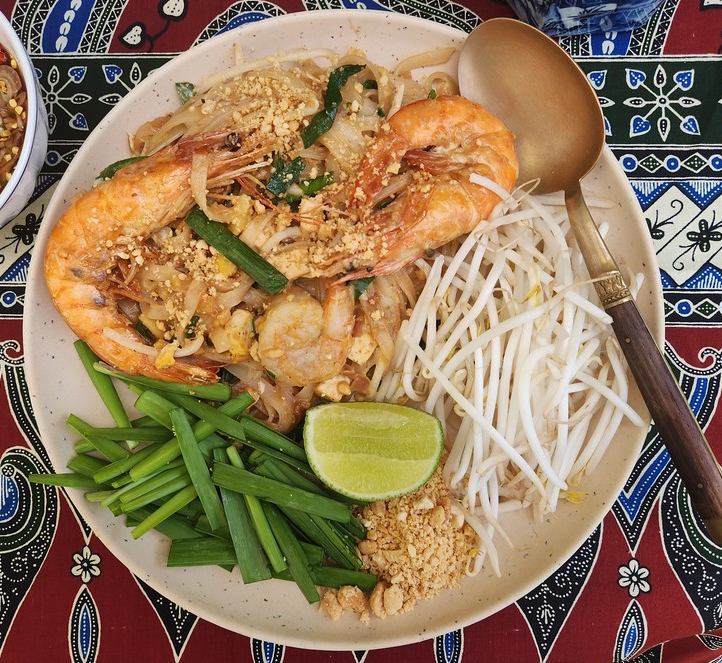
This month's recipe selection coincides with our book of the month, the Tiger's Wife, whose story is set in the Balkans.
America is considered the land of the burgers, but dining denizens of Serbia, Croatia, Slovenia, Herzegovina, Montenegro, Bosnia, Macedonia, and more recently Germany and Austria might take issue. Pljeskavica, being derived from the Serbian word for clapping hands, are meat patties with an attitude. Typically much larger than an American burger, Pljeskavica are a mixture of onions, paprika, garlic and one or more kinds of ground meat. Like hamburgers, the preferred method of cooking is grilling. Their distinctive taste is developed by mixing and then refrigerating the ingredients for several hours so that the flavors can meld. As the ingredients need to be refrigerated for several or more hours, a bit of time management and planning is requisite.
There are many regional variations in ingredients and Pljeskavica are served; all by themselves on a plate, in buns like their American cousins or between thick flat breads known as Lepinja (pitas are a handy substitute). Chopped tomatoes or onions can be served alongside (or as toppings). a popular side dish is Serbian Potato Salad which employs oil and vinegar rather than mayonnaise or sour cream.
Pljeskavica are also often served with Ajavar (aka Serbian Salsa) and/or Kajmak (a rich and creamy dairy topping). These condiments can also be served on the side or as toppings. Ajavar might be able to be found in specialty market, but freshly made from scratch is best if you want the full flavor. Ajvar can be eaten in a variety of ways, on toasted garlic bread, on salads or sandwiches, atop grilled fish, with pasta, with meats (particularly grilled meats and kabobs), and whatever else that might do with a exquisite blast of zesty flavor.
Pljeskavica Ingredients:
- 1 pound ground beef
- 1/2 pound ground pork
- 1/2 pound ground lamb
- 1/2 cup finely chopped onions
- 1 1/2 teaspoons salt
- 2 teaspoons sweet paprika
- 1 teaspoon black pepper
Preparation:
- Mix ingredients in a large bowl.
- Cover bowl and refrigerate for 3 hours or more (overnight is best).
- Form mixture into large round thin patties. (typically Pljeskavica are of a much greater diameter that American hamburgers. Rolling the ground meat into handful-sized balls and then flattening them between two pieces of waxed paper or plastic wrap (the paper works better), will allow you to achieve the proper size. Transfer the patty to the pan by flipping the bottom sheet of paper over into the pan. If you desire to eat the Pljeskavica between a split pita, cooked they should be the size of the pita.
- Refrigerate patties for another hour to firm them up.
- Grill (or fry) the Pljeskavica to your favored level of doneness.
Serve Pljeskavica burgers with Ajavar salsa, Kajmak (or creamy yogurt), a side of vinegar and oil based potato salad, french fries, tomatoes (chopped or wedges), chopped onion or whatever other condiment or side-dish that your taste buds desire! They can be eaten "hamburger style" but serving them between warmed split pita bread.
AJVAR
Ingredients:
- 6 red bell peppers
- 1 medium eggplant
- 6 unpeeled cloves of garlic
- 1/2 cup of olive oil
- 1 teaspoons of white vinegar or lemon juice
- Salt and pepper, to taste
- 1/4 teaspoon of red chili flakes
- a couple of basil leaves for garnish
Preparation:
- Place oven rack in the middle position and preheat oven to 475 degrees. Halve each pepper, discarding stems and seeds. Place peppers, cut side down, on a baking sheet.
- Cut eggplant in half lengthwise, score with a knife and coat with 1 tablespoon of olive oil, salt it lightly and place the two halves on the baking sheet. Place the 3 unpeeled garlic cloves on the side of the baking sheet that will be closest to the oven door.
- When oven reaches temperature, put the baking sheet in the oven the bake for 10 minutes and then remove the garlic cloves.
- Continue baking the red peppers and eggplant for another 20 minutes, until the skins have turned black. Please note that eggplant skins may blacken before the red peppers do. If this happens remove the eggplant first and continue baking the peppers.
- After you remove the garlic from the oven, let it cool to touch. Peel the skins off the cloves and chop the garlic finely.
- When the peppers are fully roasted, remove them from the oven and immediately place them in a bowl. Cover the bowl with a clean dishcloth or plastic wrap and let sit for 10 minutes. This will make the peppers easier to peel. When cool, peel the blackened skins off the peppers using a small knife.
- With a large spoon remove the pulp of the eggplant, discard the skins. Chop the eggplant pulp coarsely.
- Put the eggplant, peeled peppers, salt, pepper, vinegar, chopped garlic, chili flakes and the remaining olive oil in a food processor. Pulse the mixture until somewhat smooth but do not puree it, it should be a little bit lumpy.
- Pour mixture in to a serving bowl and garnish with fresh basil.
- Serve ajvar with toasted bread slices drizzled with olive oil.
Kajmak
Kajmak can be enjoyed as an appetizer or as a condiment. It is very commonly eaten with Pljeskavica and other grilled meats. in Turkey fresh Lepinja bread filled with Kajmak along with preserves or honey is a favored breakfast treat. Kajmak is definitely not for people who have to conscientiously watch their fat intake.
Ingredients:
- 1 quart of heavy cream
Preparation:
- Pour cream into a large saucepan
- Bring cream to a low simmer (just bubbling)
- Simmer for 1 hour
- Every few minutes, take a ladleful off the top of the simmering cream, hold the ladle very high above the pan and then poor its contents back into the sauce pan. Please note: BE CAREFUL when you do this, you don't want to burn yourself and you don't want to make a mess of your kitchen. It might take a wee bit of practice to get the right motion to do this well. All the recipes that I consulted include this step, but without explanation. It may have some beneficial effect with regard to thickening, but when I made the Kajmak I quickly discovered one good reason. Getting the simmering temperature just right is a bit of a challenge, you want the cream to just start bubbling. Regardless, due to some unknown (at least to me) inner workings of heat and cream, in a few minutes the cream will very rapidly decide to rise up and overflow the pot (putting new meaning into the adage "the cream always rises to the top"). the ladle trick seems to cool the mixture just enough to prevent this from happening. If you watch the pot early on you should be able to gauge the frequency you need to employ the ladling in order to prevent your stove from being anointed with boiling cream.
- After simmering for an hour, pour thickened cream into a bowl, cover and refrigerate over night.
- The following day the Kajmak will be fully congealed and ready for use. Similar to butter in consistency, it retains its creamy essence and tastes a good deal less oily than butter.
Уживајте!(Enjoy!)
Recipes by T. Johnston-O'Neill
Photos by Shari K. Johnston-O'Neill









